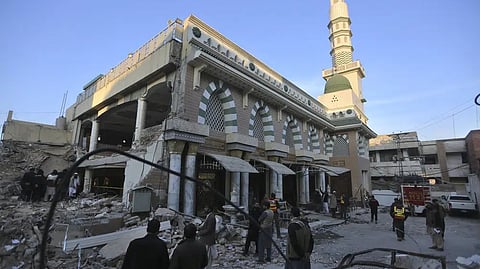

PESHAWAR: Pakistan’s Peshawar was once known as “the city of flowers,” surrounded by orchards of pear, quince and pomegranate trees. It was a trading city, situated at the gates of a key mountain valley connecting South and Central Asia.
But for the past four decades, it has borne the brunt of rising militancy in the region, fueled by the conflicts in neighboring Afghanistan and the geopolitical games of great powers.
On Tuesday, the city with a population of about 2 million was reeling after one of Pakistan’s most devastating militant attacks in years. A day earlier, a suicide bomber unleashed a blast in a mosque inside the city’s main police compound, killing at least 101 people and wounding at least 225, mostly police.
Analysts say the carnage is the legacy of decades of flawed policies by Pakistan and the United States.
“What you sow, so shall you reap,” said Abdullah Khan, a senior security analyst.
Peshawar was a peaceful place, he said, until the early 1980s when Pakistan’s then-dictator Ziaul Haq decided to become part of Washington’s cold war with Moscow, joining the fight against the 1979 Soviet invasion of neighboring Afghanistan.
Peshawar less than 30 kilometers (20 miles) from the Afghan border — became the center where the American CIA and Pakistani military helped train, arm and fund the Afghan mujahedeen fighting the Soviets. The city was flooded by weapons and fighters, many of them hard-line Islamic militants, as well as with hundreds of thousands of Afghan refugees.
Visit news.dtnext.in to explore our interactive epaper!
Download the DT Next app for more exciting features!
Click here for iOS
Click here for Android